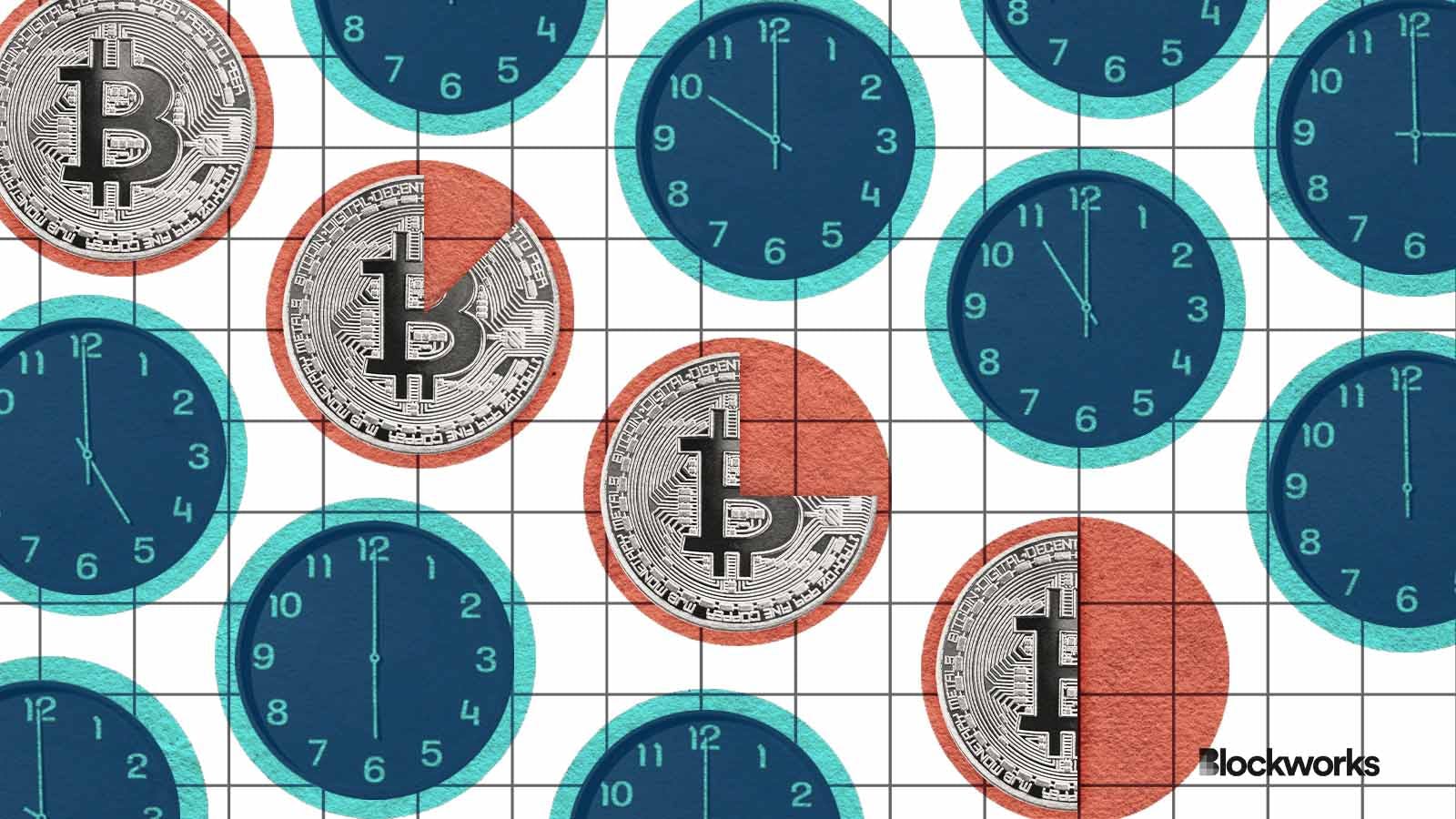Why we have no idea exactly when the next Bitcoin halving will happen
Bitcoin mining is a game of random chance played at an industrial scale, making timing the next halving practically impossible

Artwork by Crystal Le
Bitcoin’s next halving event is expected to happen sometime in the second half of April.
But nobody knows exactly when the network milestone will occur.
It could happen on April 20, which would make for another tasty hit of serendipity during what’s already been a fortuitous bull market for bitcoin.
Other portals counting down the halving say it could happen a few days earlier.
Block reward halvings cut the supply of new bitcoin by 50%, and through either allegiance to fractals or mere superstition, they’re considered catalysts for price growth and a bedrock for BTC’s perceived four-year market cycles.
Read More: The history of Bitcoin halvings — and why this time might look different
Slashing issuance by half spiritually overhauls the fundamentals of supply and demand for bitcoin. Halvings don’t affect the overall difficulty of bitcoin mining, they just reduce the reward — effectively doubling the cost of bitcoin production.
The importance of halvings suggests we should understand the specific time and date for their occurrence. Pinpointing an exact time and date for the halving is, however, impossible.
- Satoshi Nakamoto opted to cut Bitcoin’s issuance in half every 210,000 blocks.
- They set protocols to ensure blocks are found every 10 minutes on average.
- It takes about 2.1 million minutes to mine 210,000 blocks, which converts to around four years.
Every block has its own unique hash, a 64-digit hexadecimal string, which miners must find to win the right to add the block to the chain and reap the reward. That reward, currently 6.25 BTC, is soon to be 3.125 BTC.
Miners run specialized machines — application-specific integrated circuits (ASICs) — capable of producing trillions of hashes per second. More machines means more trillions of hashes, which over time should convert to more bitcoin mined, despite its randomness (thus is the industrialized bitcoin mining industry we know today).
Read more: As crypto burns, solo bitcoin miner wins BTC ‘lottery’
Finding blocks is a stochastic process. Sometimes they take seconds to find — other times, hours. This unpredictability is exactly why it’s not feasible to know when the next block will hit, let alone the next halving.
Still, the rate of discovery is influenced by what’s known as the global block difficulty. After every 2,016 blocks, Bitcoin calculates how long it took to discover that set and makes it either harder or easier to mine blocks.
“If the previous 2,016 blocks took more than two weeks to find, the difficulty is reduced. If they took less than two weeks, the difficulty is increased. The change in difficulty is in proportion to the amount of time over or under two weeks the previous 2016 blocks took to find,” per the long-serving Bitcoin community wiki.
Read More: The Bitcoin halving is about a month away — here’s what you can expect
In effect, a higher difficulty means fewer potentially correct hashes for miners to randomly guess. So, it takes longer to find the right one to successfully mine a block. And vice versa.
Because difficulty is only adjusted every two weeks, block production can still speed up over extended periods of time, especially when there are a lot of machines directed at the chain.
If Bitcoin were to strictly add blocks every 10 minutes, then 144 BTC would be mined every day. Over the past year, 147 blocks have been added on average, largely on account of record-high hash rate.
All this to say, it’s impossible to know when the next halving, and any halving after that, will occur exactly, due to the random nature of bitcoin mining. It’s just not something you can set your clock to. But you can bet it’s on its way.
Start your day with top crypto insights from David Canellis and Katherine Ross. Subscribe to the Empire newsletter.





